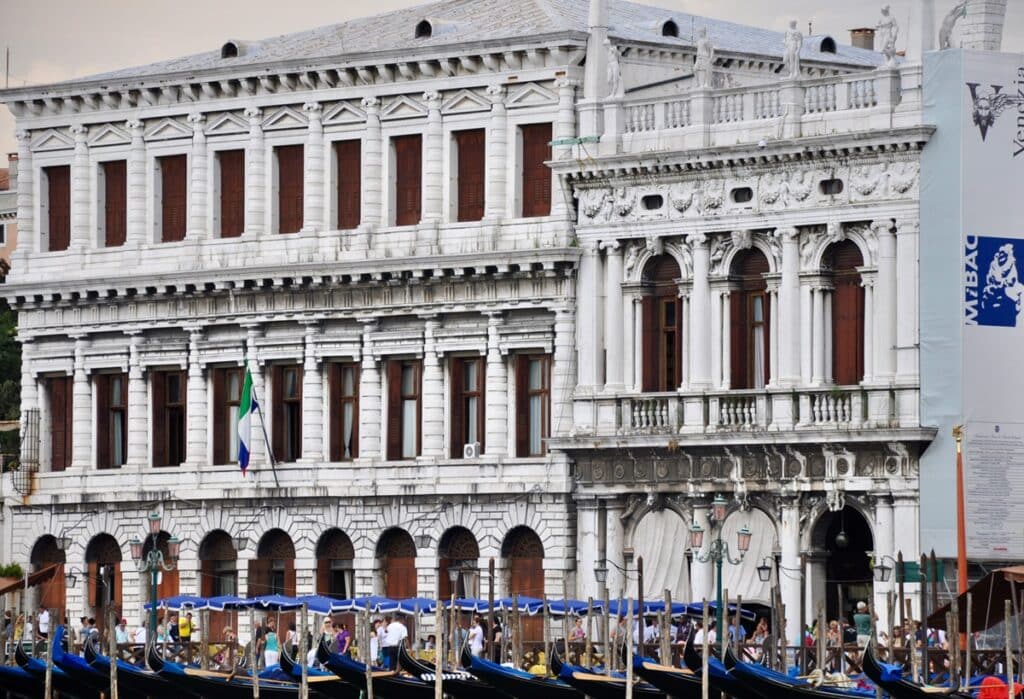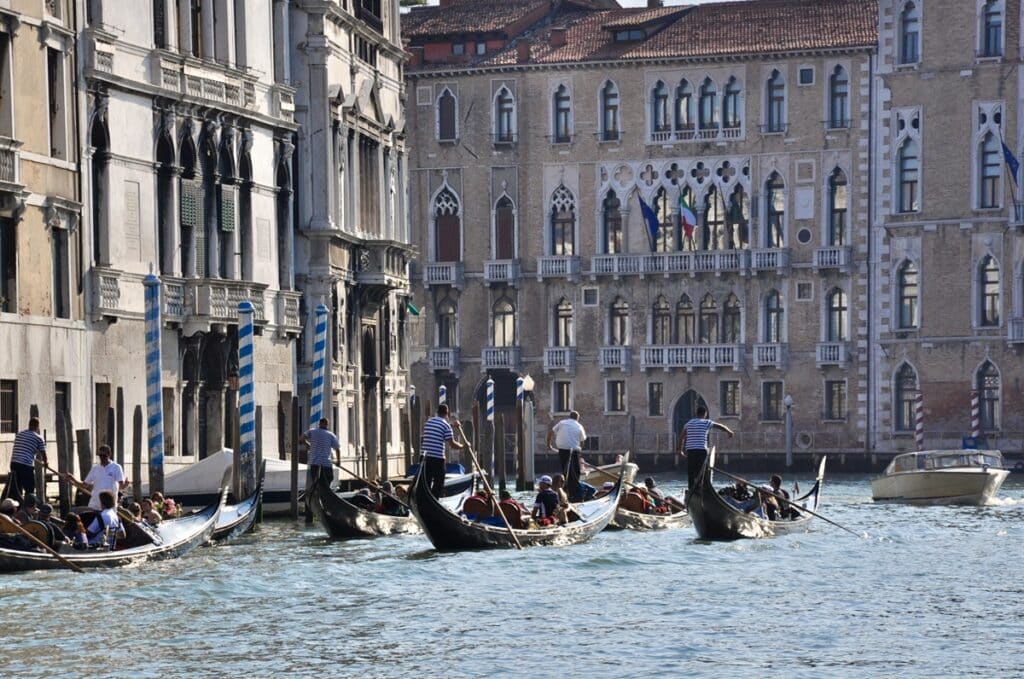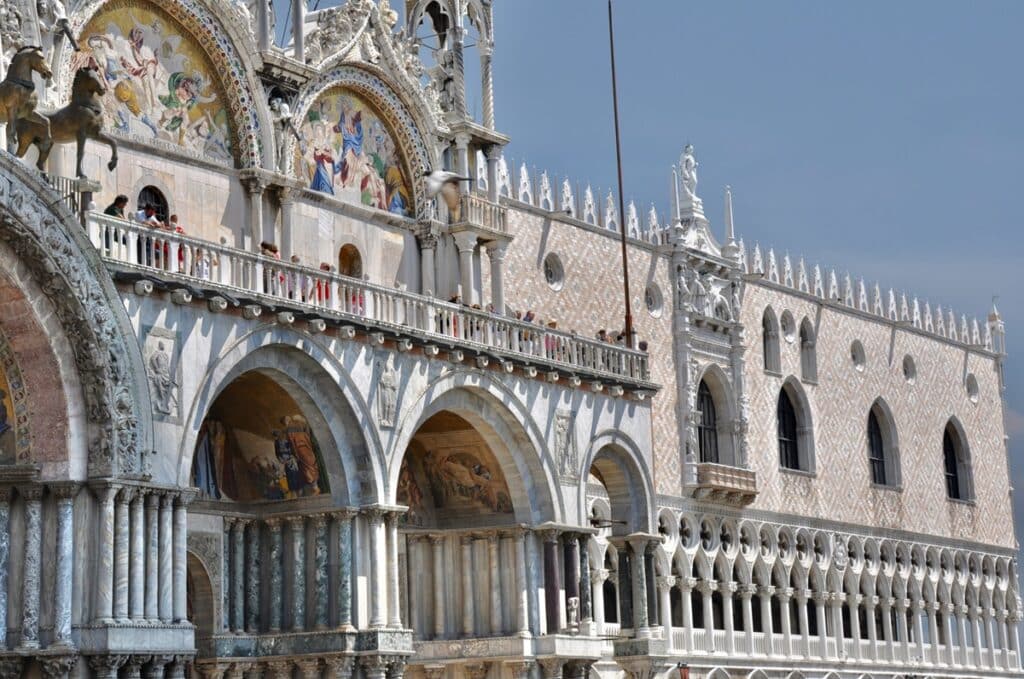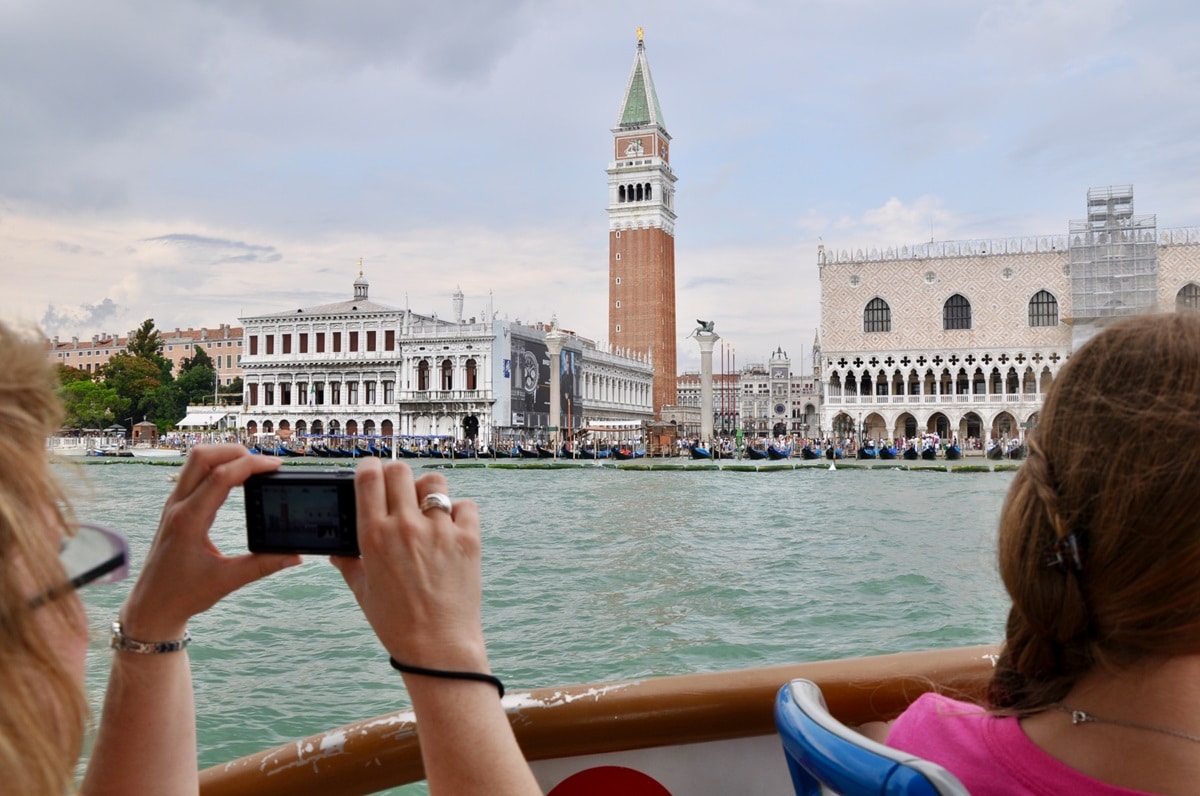“The day you go to Venice . . . will be one day quite by itself in your life. You will be alive that day.” – E. Temple Thurston, British poet & playwright.
(Text and photos by Paul Partridge)
My wife and I are greeted outside the Venezia Santa Lucia Railway Station by a private water taxi. The boat’s wooden hull shines as if it has been meticulously polished. We settle into the luxurious leather-upholstered cabin, taking in the dazzling view before us.
The Grand Canal buzzes with a vibrant mix of rowboats, sailboats, working vessels, luxury yachts, and, of course, gondolas. The golden rays of the setting sun sparkle off the ancient buildings, churches, and bridges that line the canal.
As we set off from the dock, a Bellini is offered and graciously accepted. After just one sip, I find my balance wavering. Is it the drink? The gentle sway of the boat? Or perhaps my mind is struggling to comprehend a city floating on water? Venice seems almost unreal—this watery Oz feels more like a mirage or a touch of magic.

The captain expertly navigates through the bustling canal traffic to the Ca’ Sagredo Hotel’s entrance. We were warmly welcomed by the elegantly dressed hotel manager and ushered inside. The hotel feels like a palace—because it truly is, having been a noble residence since the 15th century. Another drink awaits us—a Spritz Veneziano. As we are guided from the grand staircase through the frescoed music ballroom to our room, it all begins to make sense:
It feels as though we’re stars in a period drama, a sweeping romance, no doubt. I half-expect the director to yell, “Cut, that’s a wrap!” and for us to return to our mundane routines of peeling potatoes and taking out the trash.
But instead, the scene unfolds further, each moment more enchanting than the last.
Venezia… La Serenissima. The Most Serene. Despite this moniker, Venice evokes strong emotions, even among Italians; it’s a city you either love or hate. Critics cite high costs, rising water levels, unpleasant odors, swarms of tourists, and flocks of pigeons as drawbacks.
Certainly, Venice has its imperfections. But its charm is undeniable, as many notable figures such as Dante, Byron, Henry James, Hemingway, Mark Twain, and Ezra Pound would attest. If you’re a fan of art, history, romance, and mystery, Venice offers them all.
Plus, many of Venice’s drawbacks can be mitigated by timing your visit wisely. For instance, avoid going in August when it’s sweltering, humid, and packed with tourists. Flooding from high tides (acqua alta) happens only a few times each year, with the highest likelihood in October, November, and December, according to local sources. As for the often-cited foul smell, I’ve never encountered it despite my heightened sensitivity to odors.

The concern about high prices in Venice is certainly valid. Yes, Venice can be pricey, but much like other island destinations such as Hawaii, Nantucket, or Saint Lucia, costs tend to be higher where goods need to be transported by boat.
A few insights can help you manage expenses: You don’t need to spend two weeks in Venice; three or four days are sufficient for most visitors. Also, prices tend to drop the further you move from St. Mark’s Square, the main tourist hub. By dining, drinking, and shopping away from the crowded tourist spots, you’ll find that your money stretches much further.
Here are some budget-friendly options:
Try a Vaporetto: This public water bus is a popular way to get around and explore Venice. Consider a 1-, 2-, or 3-day pass to save money. The onboard experience is entertaining, especially during rush hours, with a fascinating variety of items carried on board—pets, bikes, groceries, and more. And the view? It’s quintessential Venice.
Visit the Fish Market: Just a one-minute walk from the iconic Rialto Bridge, this market has been the heart of Venice’s seafood trade since 1173. Local fishermen bring in their fresh catch daily, including octopus, eels, swordfish, squid, prawns, tuna, soft-shelled crabs, and more. It’s a lively, bustling spot brimming with energy and colorful fishmonger characters.
Admire the Venetian Architecture: Venice is a city like no other, built over centuries with layers of history embedded in its structures. The city showcases a fascinating mix of architectural styles, including early Romanesque, Gothic, Renaissance, Baroque, Neoclassical, and Byzantine.

Explore St. Mark’s in Early Morning: Experiencing Piazza San Marco in the early hours is nothing short of magical. It’s calm, captivating, and beautifully serene. Other equally enchanting times are under the moonlight or in the fog (prepare for goosebumps). Standing before you is the stunning St. Mark’s Basilica (which you can tour for free), the grand Doge’s Palace (take a guided tour), and the impressive Clocktower (worth a visit inside), all watched over by the columns of San Todaro and the iconic winged lion. It’s easy to see why Napoleon dubbed St. Mark’s “The drawing room of Europe.”
Stroll: Start your day with a coffee or cappuccino and venture off the beaten path. Though it may seem surprising for a city built on water, Venice is incredibly walkable. There are no cars, no honking horns, and no motorcycles to avoid—just countless charming passageways to explore. As the gentle sound of church bells fills the air, getting lost in Venice becomes a delightful adventure.
Explore Murano: In 1291, Venice relocated its glassmaking industry to Murano to reduce fire risks and maintain strict control over its glassmakers. The glass trade was so valuable that any glass master attempting to leave the Republic faced a death sentence. Today, you can still witness skilled artisans at work, blowing and shaping glass into stunning creations.




